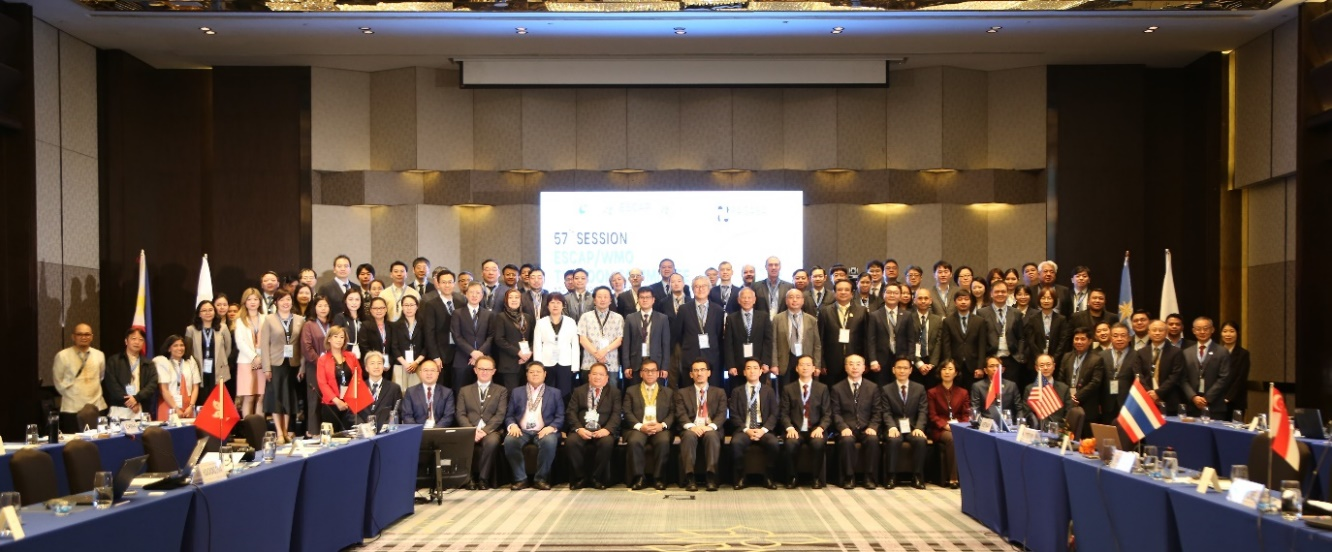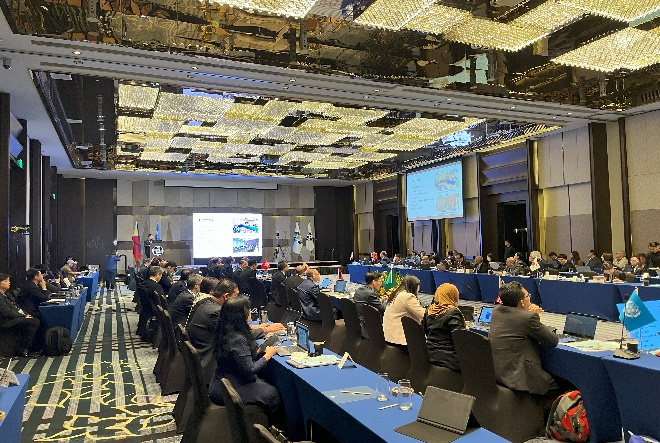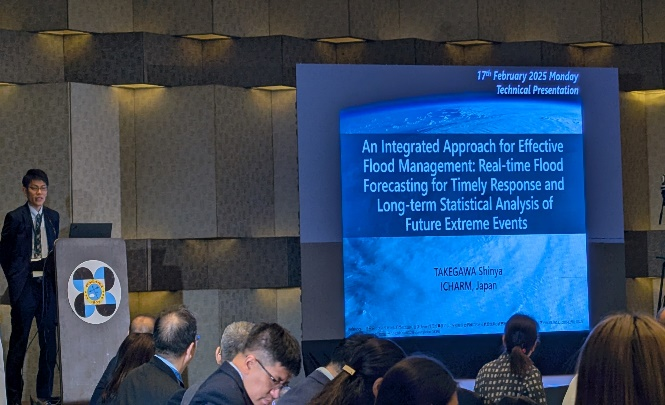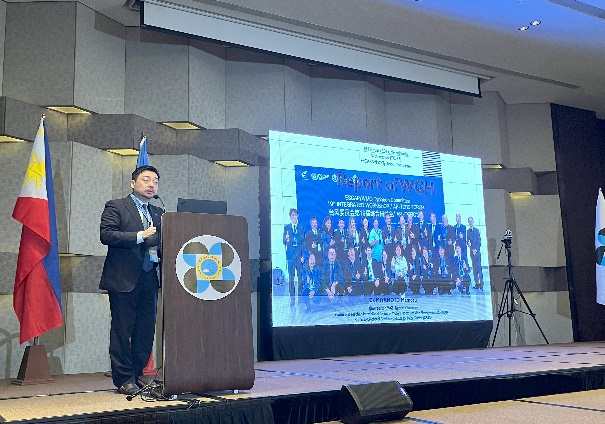Senior Researcher MIYAMOTO Mamoru and Researcher TAKEGAWA Shinya participated in the 57th annual session of the Typhoon Committee (TC) held in Manila, Philippines, February 17-20, 2025. The Typhoon Committee is an international assembly of 14 nations and territories in East and Southeast Asia that are often affected by typhoons. The committee comprises four working groups: the Working Group on Meteorology (WGM), the Working Group on Hydrology (WGH), the Working Group on Disaster Risk Reduction (WGDRR), and the Training and Research Coordination Group (TRCG), which are overseen by the Advisory Working Group (AWG). Annual sessions are pivotal meetings where all stakeholders gather to review the activities of each working group and make comprehensive decisions.
The meeting was attended by 101 participants, which included representatives from 12 of the 14 member countries and regions (China, Hong Kong, Macao, Japan, Lao PDR, Malaysia, Philippines, Korea, Thailand, Singapore, Vietnam, and the United States), the World Meteorological Organization (WMO), the United Nations Economic and Social Commission for Asia and the Pacific (ESCAP), and the Typhoon Committee Secretariat (TCS). Japan’s delegation consisted of representatives from the Water and Disaster Management Bureau of the Ministry of Land, Infrastructure, Transport and Tourism (MLIT), the Japan Meteorological Agency (JMA), the Regional Specialized Meteorological Center (RSMC), the Infrastructure Development Institute (IDI), Tohoku University, and ICHARM.
On the first day, after the opening remarks, technical presentations were delivered by the Regional Specialized Meteorological Center on “Summary of the 2024 Typhoon Season” and by Takegawa on “An Integrated Approach for Effective Flood Management: Real-time Flood Forecasting for Timely Response and Long-term Statistical Analysis of Future Extreme Events.”
On the second day, the four working groups reported the review results of their Annual Operation Plans (AOPs) and presented plans for 2026. Miyamoto, the sitting WGH chair, delivered the review and plans of WGH. During the session, chairs of each working group were also appointed, with Miyamoto officially confirmed to continue serving in the current position for the next fiscal year. In addition, the establishment of the “Typhoon Committee Research Award for Young Scientist” was approved.
On the third day, the Typhoon Committee Secretariat reported on discussions regarding the naming of the typhoon that caused extensive damage, as well as the budget balance, which was followed by the election of the Advisory Working Group chairmanship.
The final day addressed the schedule and location for next year’s integrated workshop and annual session, successfully concluding the committee’s important yearly event. Participation in the 57th annual session was a valuable opportunity to demonstrate the international presence of Japan, ICHARM, and PWRI, and to contribute to improving the resilience of the region. Through close face-to-face exchanges, ICHARM was able to deepen mutual understanding and cooperation with each participating country, as well as strengthen collaboration through technology sharing among domestic institutions. ICHARM will continue to lead interregional cooperation for water-related disaster risk reduction and resilience enhancement through the Typhoon Committee and other international frameworks.
For more information about the 57th General Meeting of the Typhoon Committee:
https://www.typhooncommittee.org/57th/index.html
 |
|
 |
 |
during the technical presentation |
|
 |
|